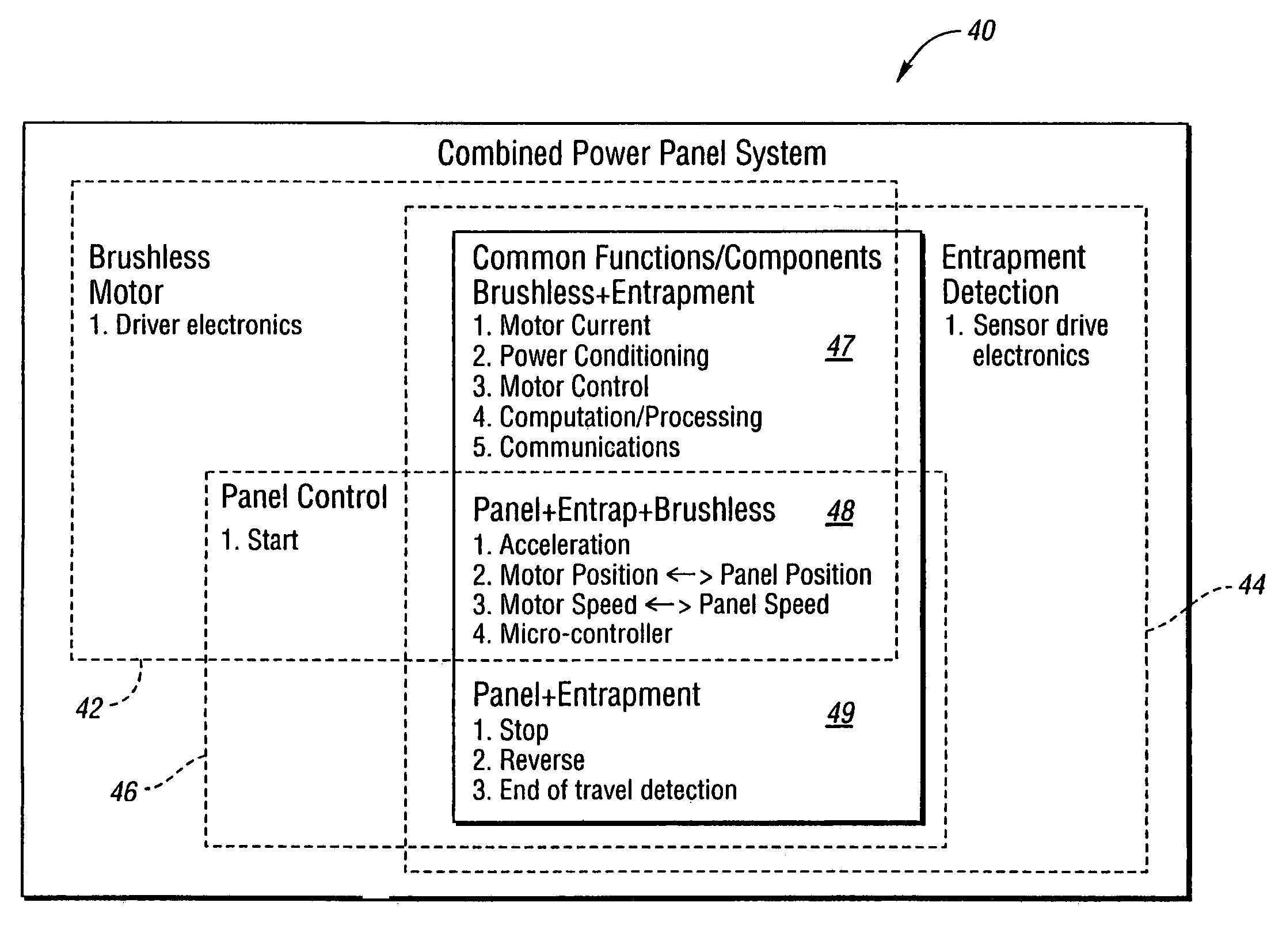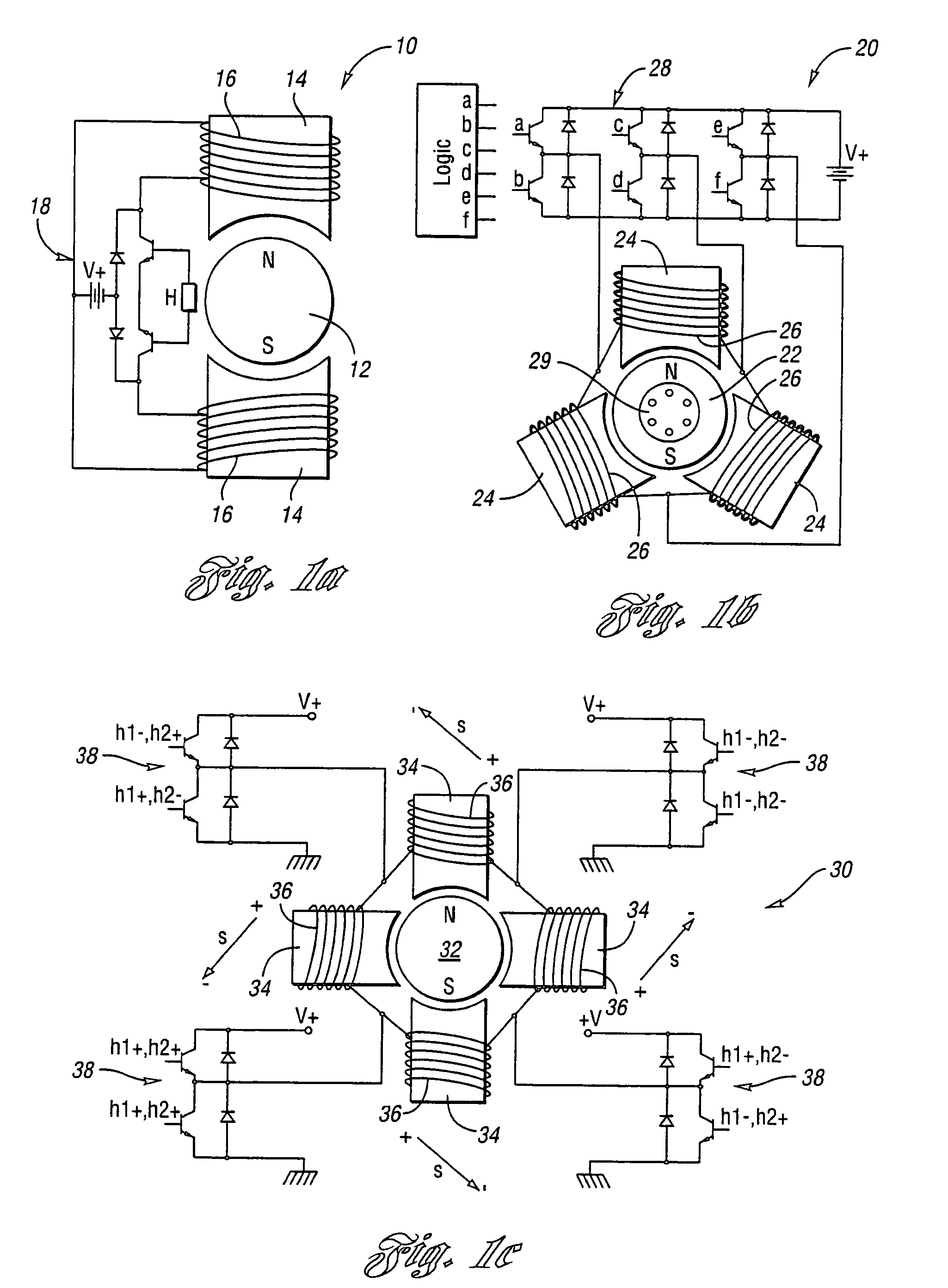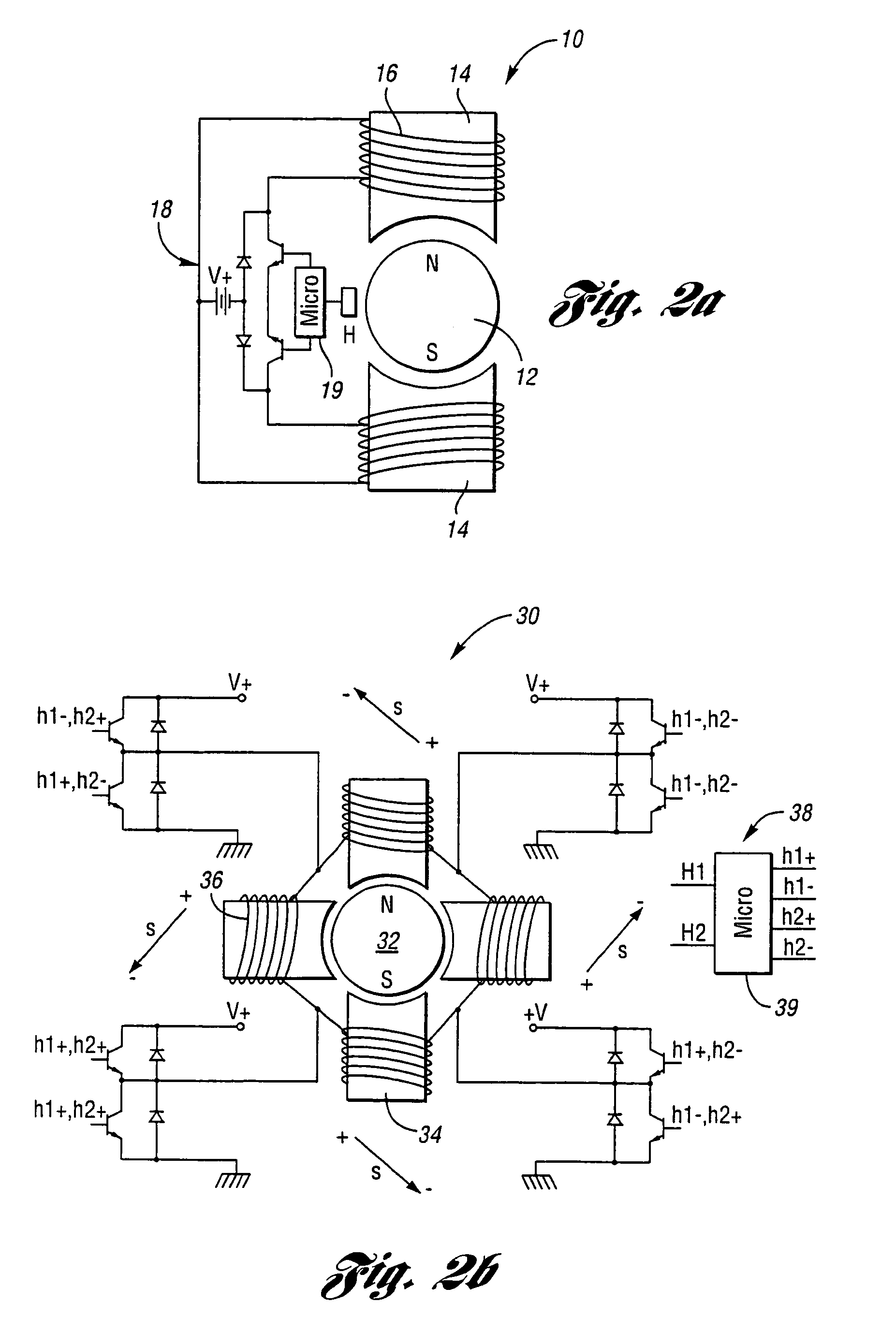Powered panel moving system
a technology of moving system and power panel, which is applied in the direction of program control, dynamo-electric converter control, instruments, etc., can solve the problems of increased speed and torque, disadvantage of requiring additional speed and/or window position sensors, and higher speed and torque, so as to achieve the effect of reducing the cost of brush-less electronics and mechanical advantages
- Summary
- Abstract
- Description
- Claims
- Application Information
AI Technical Summary
Benefits of technology
Problems solved by technology
Method used
Image
Examples
Embodiment Construction
)
[0045]In high duty cycle applications, the requirement to dissipate heat can lead to the use of a larger motor running at a lower speed than would otherwise be desired. In such a case it could be advantageous to use an external armature for improved heat dissipation to allow operation with a smaller motor in order to realize lower motor material cost, weight, and volume. However, this change requires the use of brush-less electronics which impose an increased cost although brush-less designs are more reliable by eliminating brush wear and failure.
[0046]Among other variations, brush-less motor electronics are provided in two, three, and four phase variants with unipolar and bipolar excitations. FIGS. 1a, 1b, and 1c respectively illustrate representative mechanical and electrical configurations of two, three, and four phase sensor-based brush-less motors.
[0047]FIG. 1a illustrates a mechanical and electrical configuration of a two-phase sensor-based brush-less motor 10. Motor 10 inclu...
PUM
 Login to View More
Login to View More Abstract
Description
Claims
Application Information
 Login to View More
Login to View More - R&D
- Intellectual Property
- Life Sciences
- Materials
- Tech Scout
- Unparalleled Data Quality
- Higher Quality Content
- 60% Fewer Hallucinations
Browse by: Latest US Patents, China's latest patents, Technical Efficacy Thesaurus, Application Domain, Technology Topic, Popular Technical Reports.
© 2025 PatSnap. All rights reserved.Legal|Privacy policy|Modern Slavery Act Transparency Statement|Sitemap|About US| Contact US: help@patsnap.com



